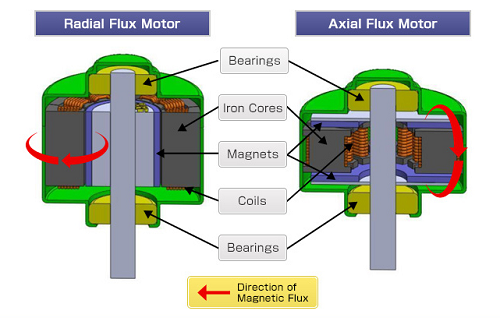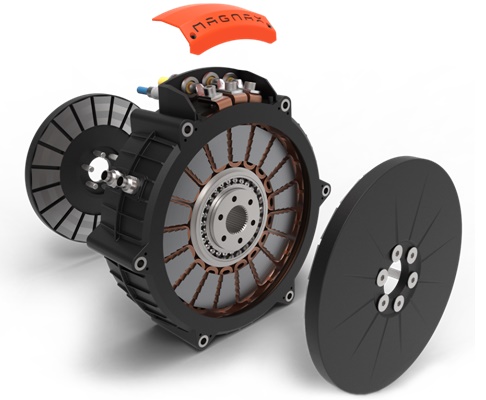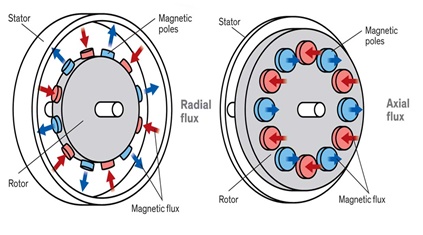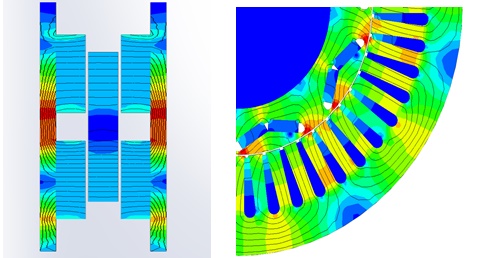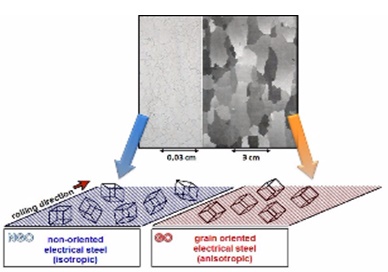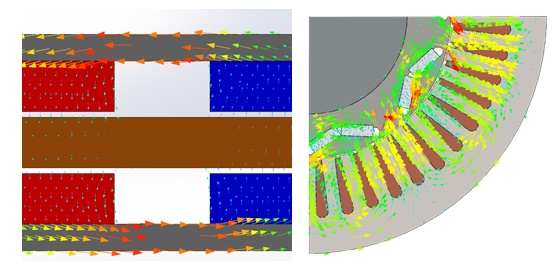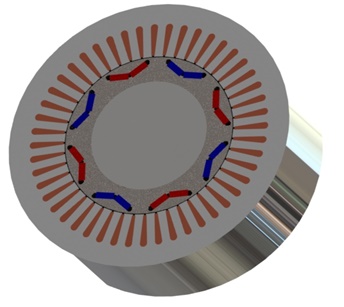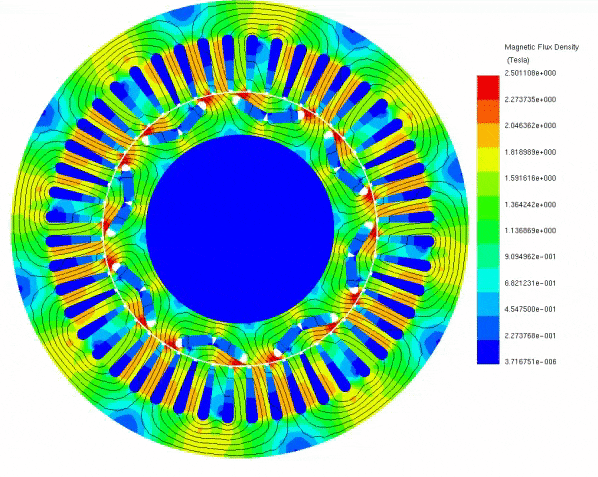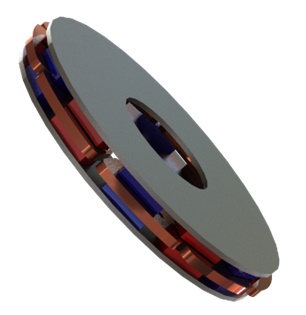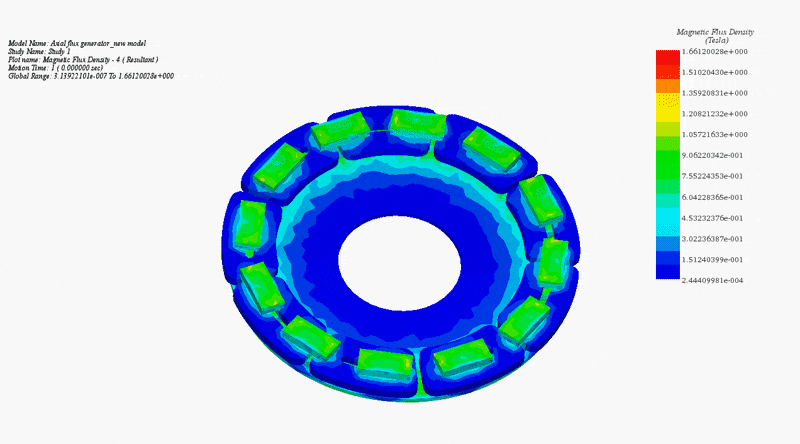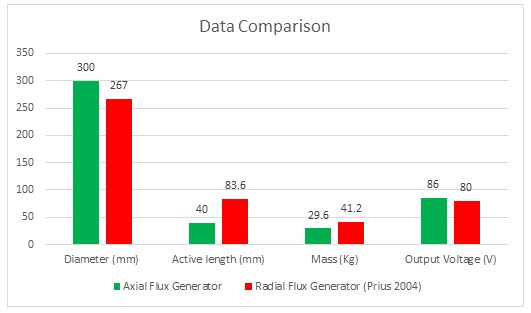Introduction
Electrical machines are typically categorized as either radial or axial flux machines. Radial flux machines have been prevalent for quite some time, while axial flux machines have gained popularity primarily over the last two decades. The key distinction lies in their flux direction: axial flux machines have a magnetic flux direction parallel to the machine's rotation axis, whereas radial flux machines have a radial magnetic flux direction.
Figure 1 - Main components of radial and axial flux machines [1] Figure 2 - Axial flux motor developed by Magnax [2]
Why Axial flux machine is considered superior to a Radial flux machine?
In radial machines, the flux path is considerably longer compared to axial machines. This elongated path spans from one rotor pole to the first stator tooth, then traverses through the stator back iron to the second tooth, ultimately returning to another rotor pole. Conversely, axial flux machines feature a shorter and more direct flux path, moving directly from one pole to another through the air gap. This shorter path helps maintain a strong magnetic field, contributing to increased efficiency and power density. Figure 4 illustrates 2D simulations from EMWorks2D, depicting the magnetic flux path and direction in both machine types.
Figure 3 - Direction of the magnetic field in both radial and axial flux machines [3] Figure 4 - Flux lines generated by EMWorks2D [4]
In radial machines, the flux follows a 2-dimensional path, making the use of grain-oriented steel impractical. Conversely, in axial machines, the magnetic flux path is unidirectional, enabling the utilization of grain-oriented steel. This type of steel offers higher permeability, leading to reduced iron losses in axial flux machines and a potential efficiency increase of up to 2%.
Figure 5 - Difference between grain-oriented and non-oriented steel [5] Figure 6 - The magnetic field vector direction The axial flux machine holds a significant advantage over radial machines when it comes to winding configuration. With a higher active winding copper and reduced overhang, there's greater flexibility to increase the number of turns and minimize heat generated by end effects. Additionally, the winding can be in direct contact with aluminum, a superior heat conductor, facilitating a more efficient cooling system. In contrast, radial machines must dissipate heat through the stator core, typically composed of steel with lower thermal conductivity.
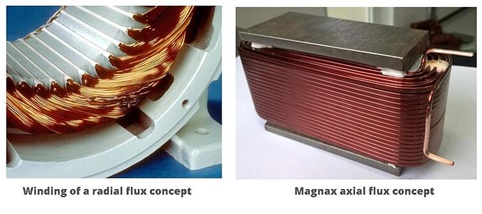
Figure 7 - Comparison between winding of a radial flux concept and Magnax axial flux
concept [6]
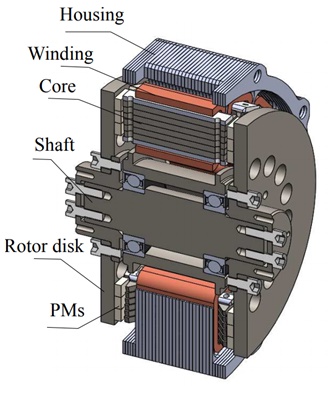
Figure 8 - Example of an axial flux motor with aluminium housing [7]
Comparison between two examples of radial and axial flux generators
To elucidate the disparity between radial and axial flux machines, EMS was employed for analysis. The study encompassed a radial interior permanent magnet (PM) synchronous machine, akin to the one featured in the 2004 model of the Toyota Prius, and a 24-pole double-sided rotor axial flux generator. These models were seamlessly simulated using EMS. The no-load voltage results reveal that the axial flux machine yields a higher output voltage of 86V compared to the radial PM machine's 80V. Notably, the axial flux machine achieves this higher output power while employing less material and exhibiting a more compact structure.
Figure 9 - Radial interior permanent magnet synchronous machine
Figure 10 - Axial flux permanent magnet machine
Figure 11 - Data comparison between radial and axial flux machines
In summary, this comparative analysis sheds light on the strengths of axial flux machines in electrical engineering. With superior efficiency, power density, and thermal management capabilities, axial flux machines present a compelling choice for various electronic applications. Understanding these differences is crucial for engineers seeking to optimize performance and design in the ever-evolving field of electrical engineering.
